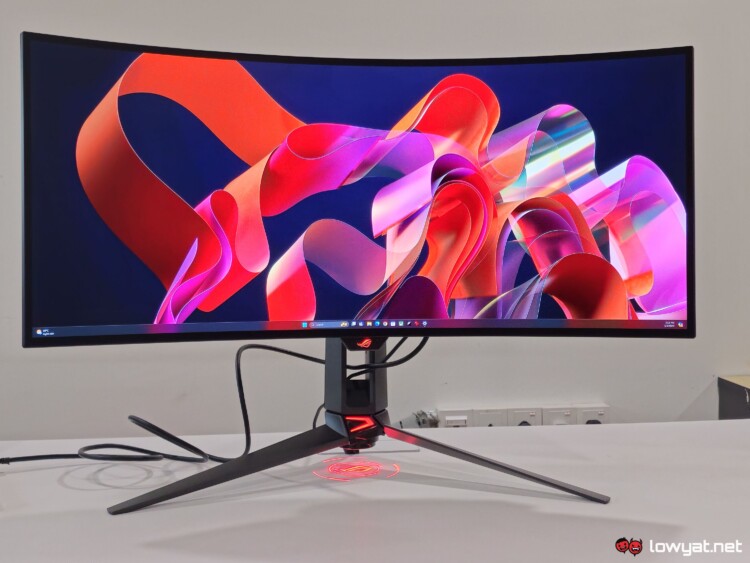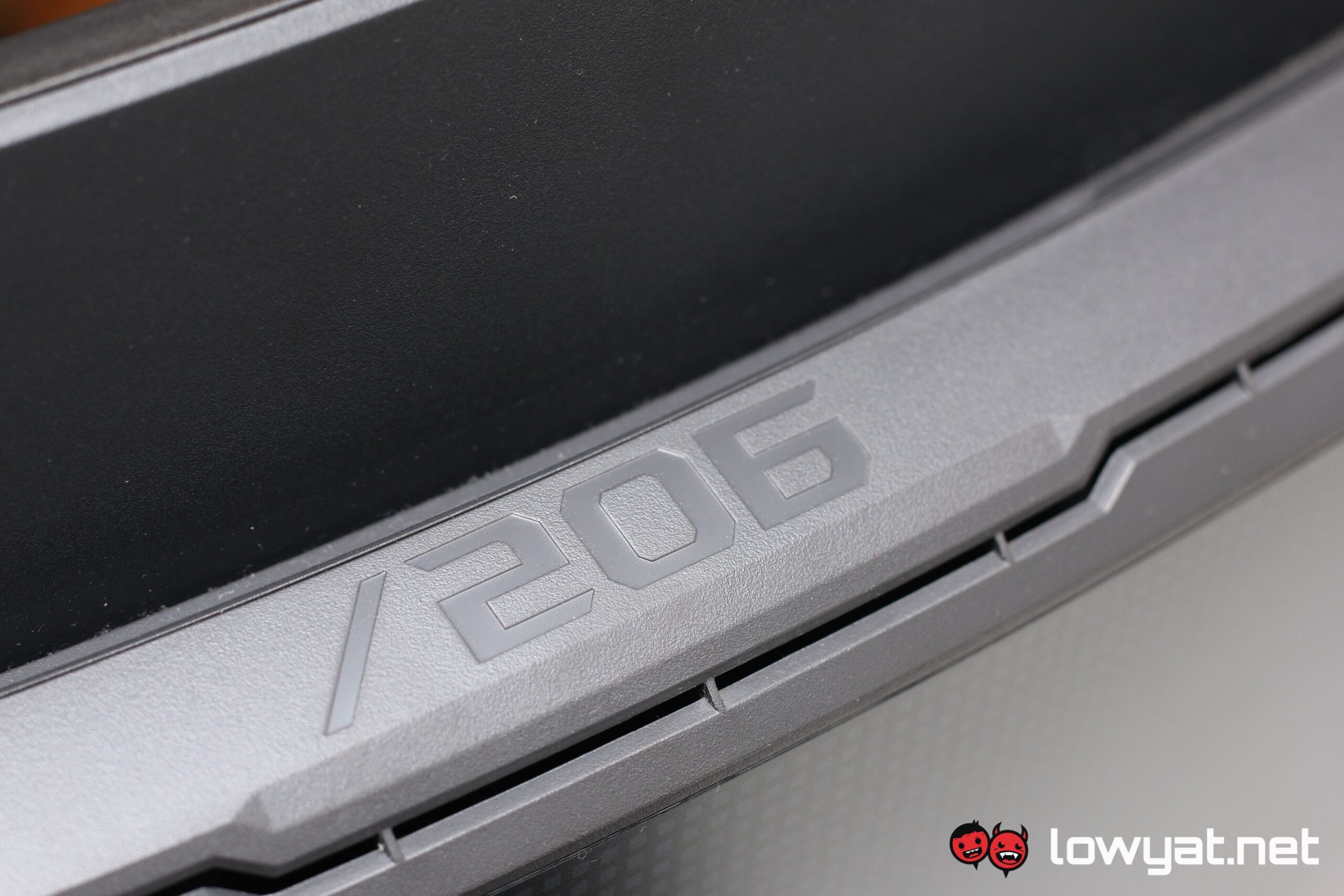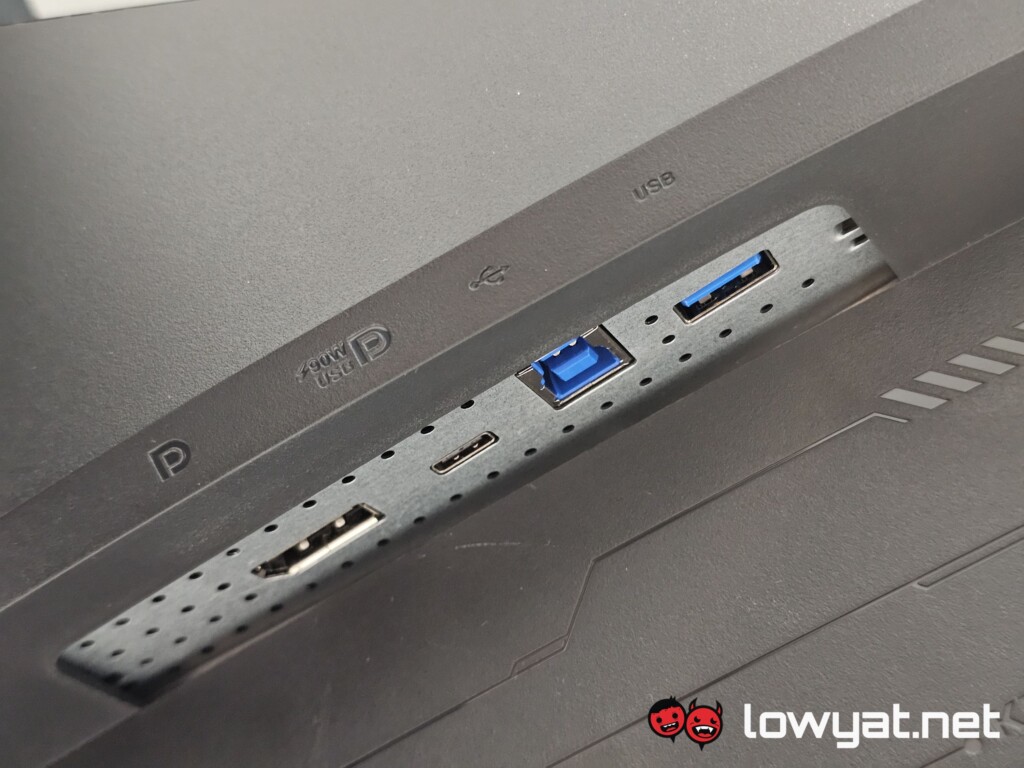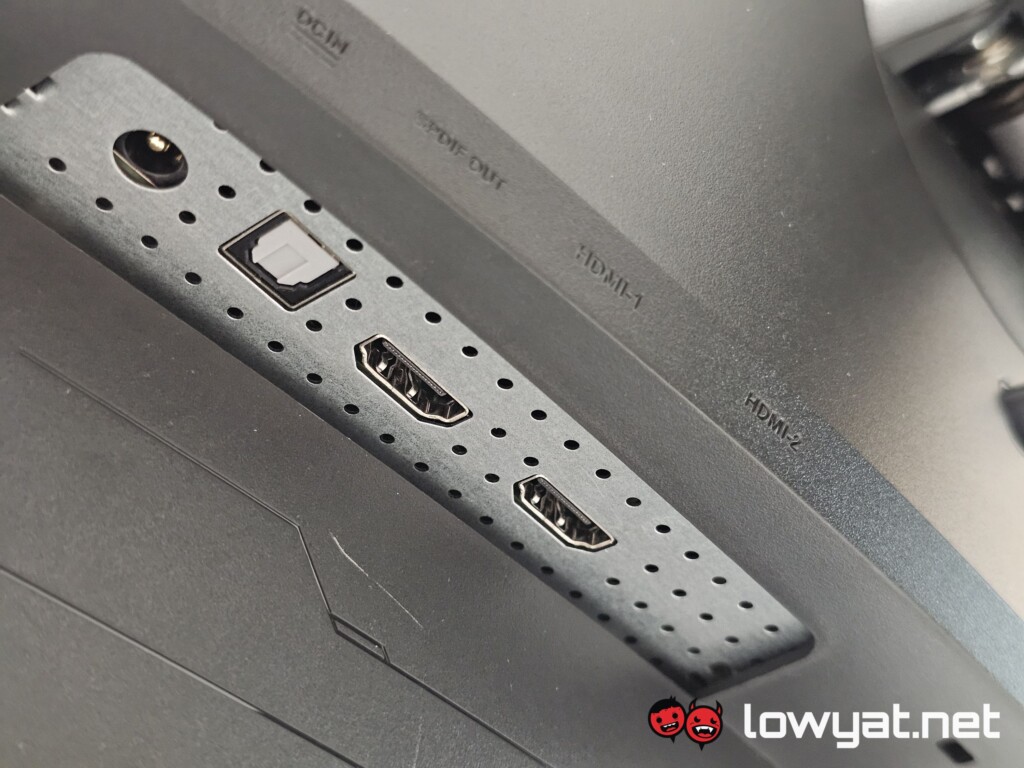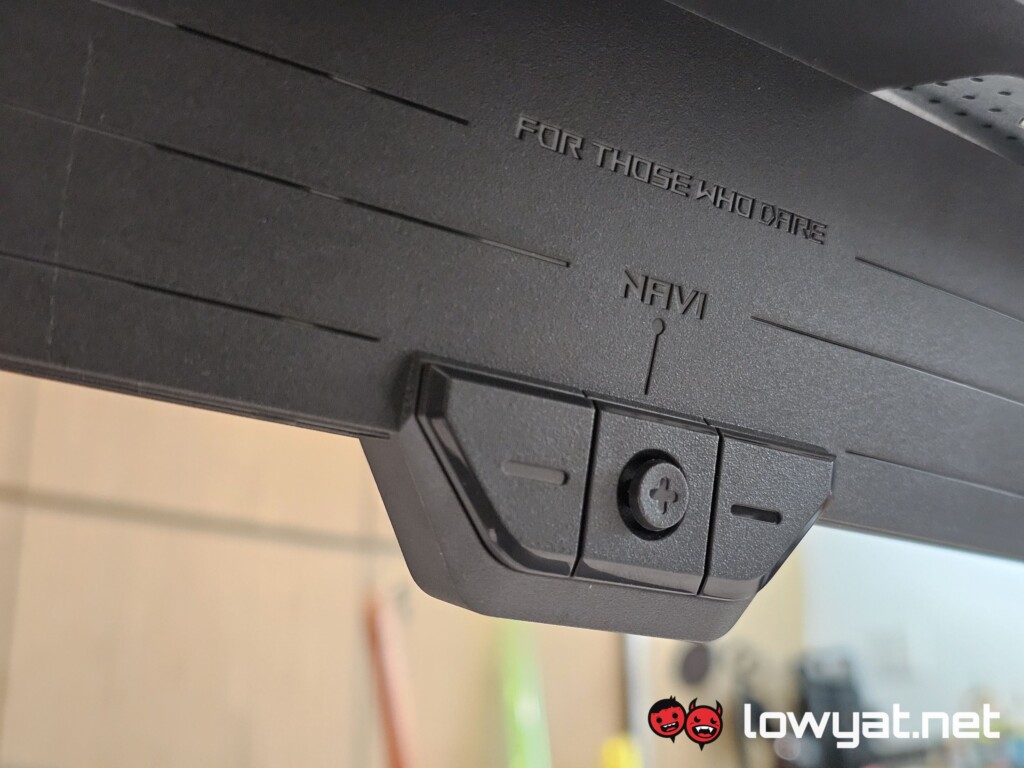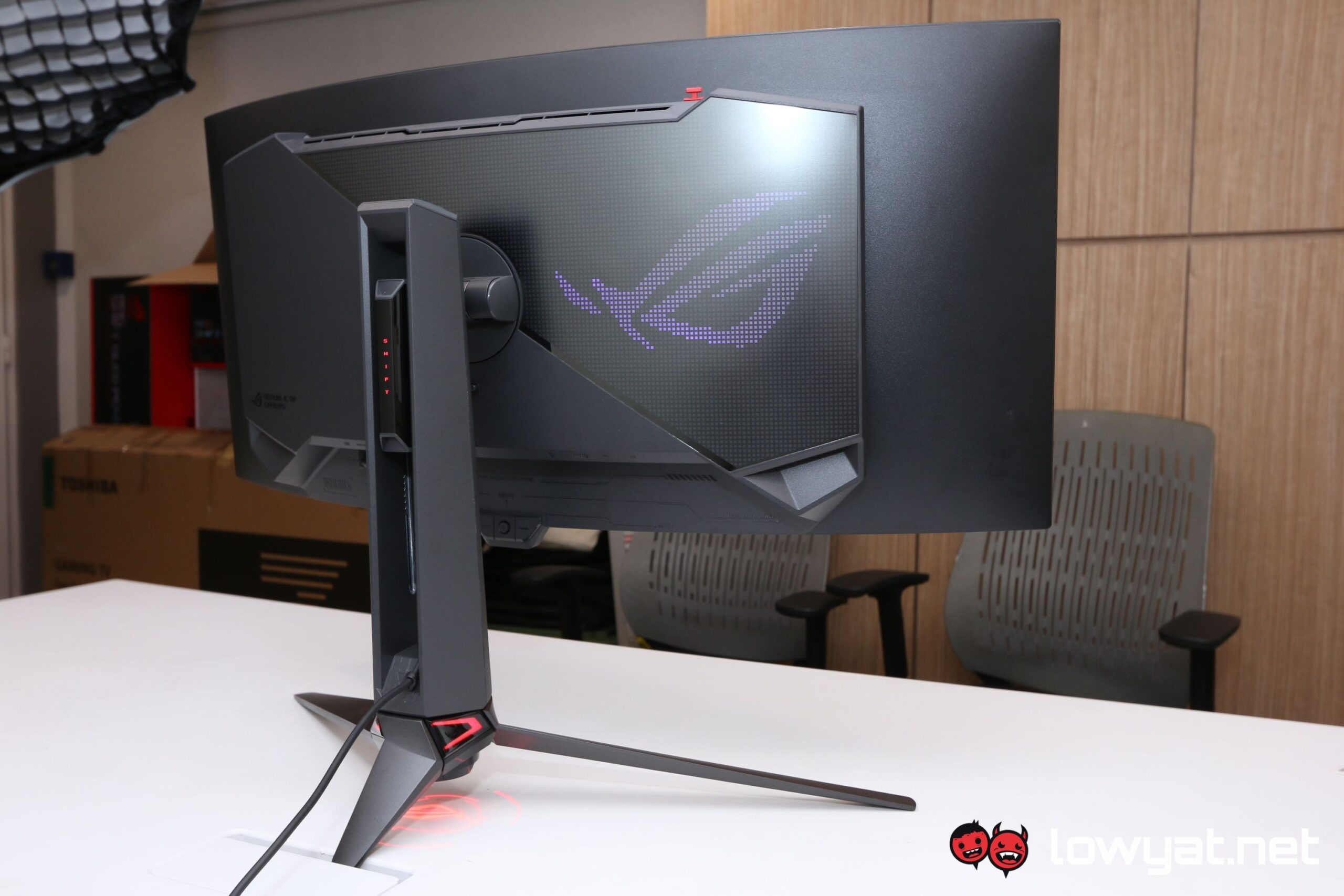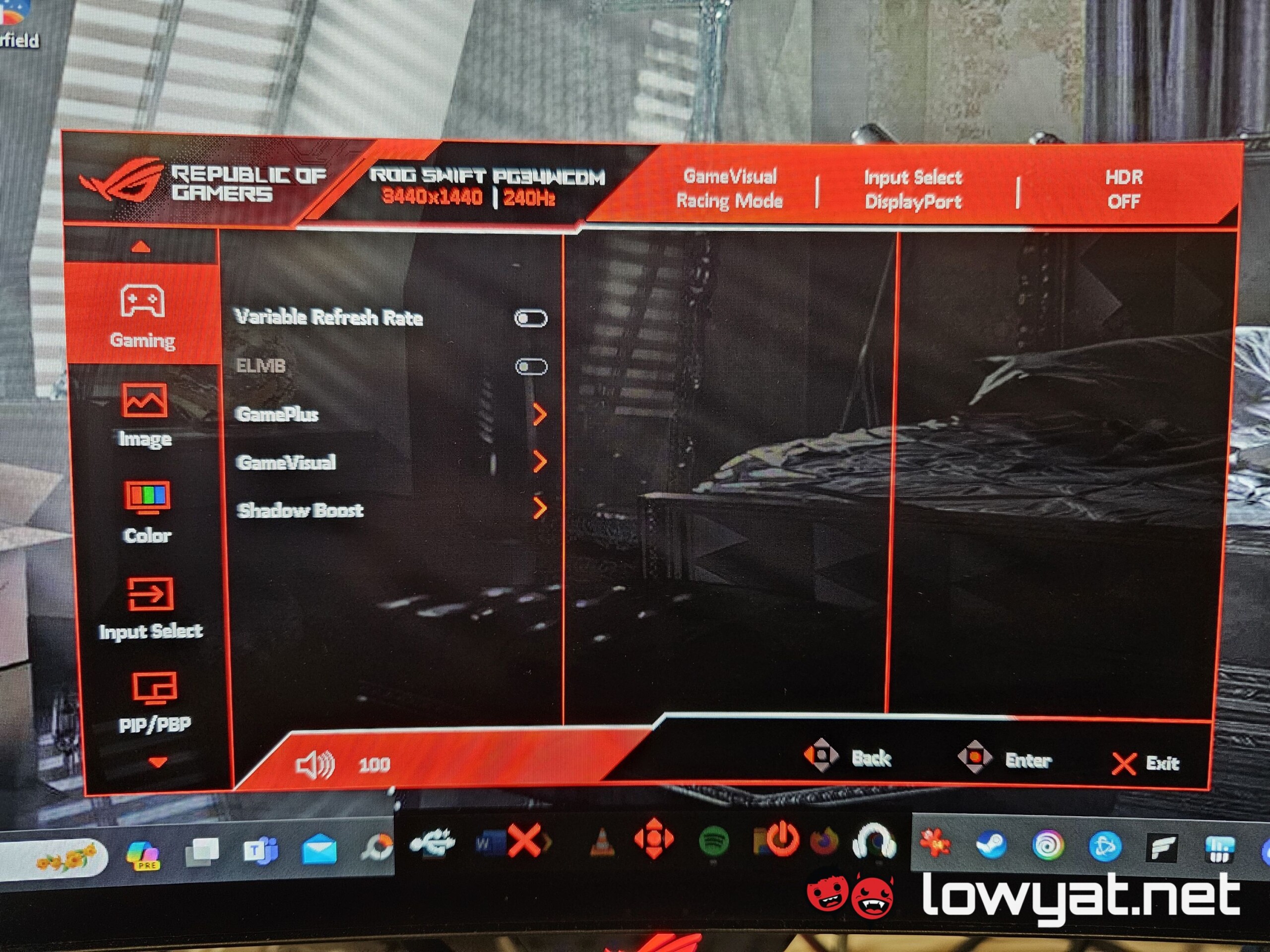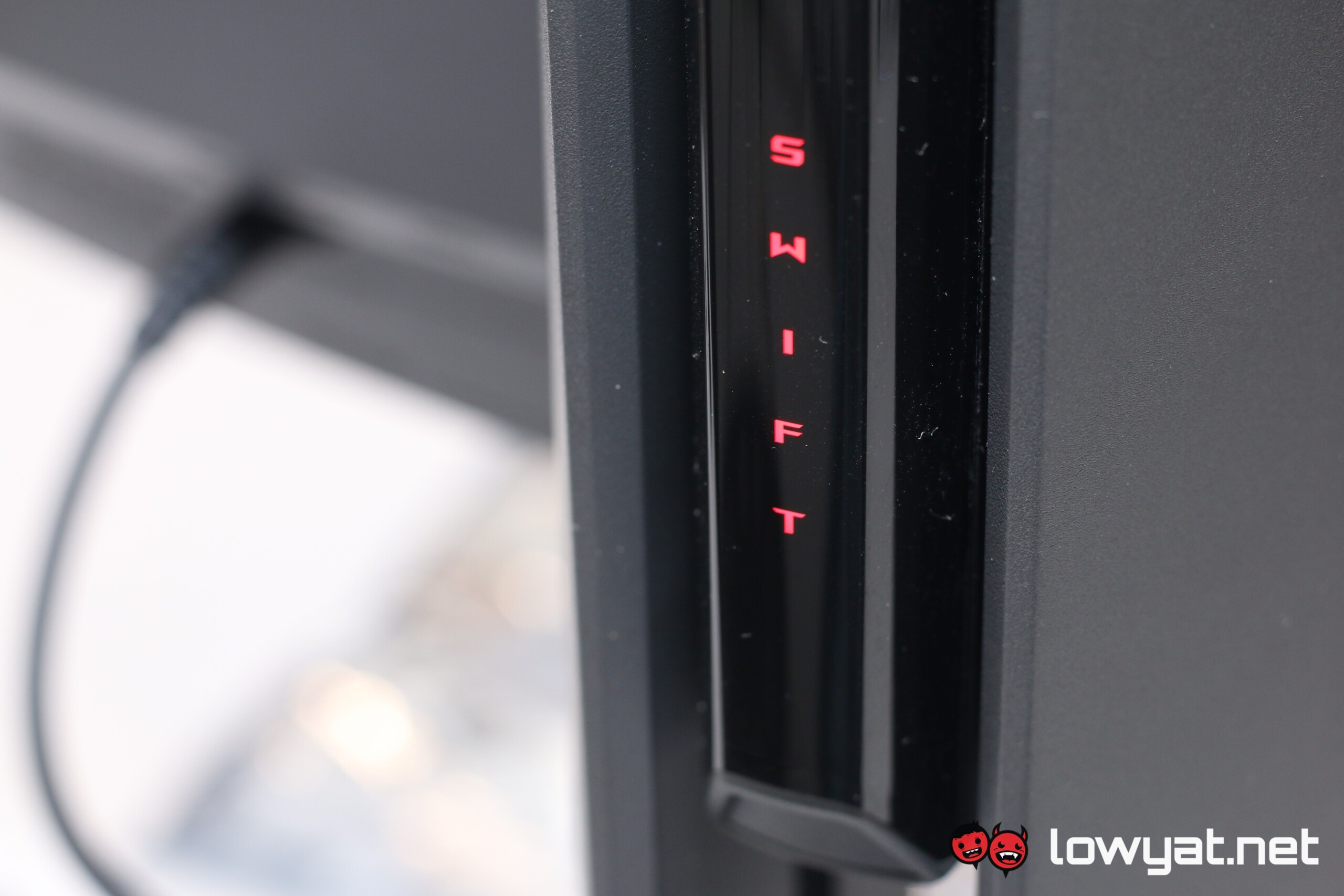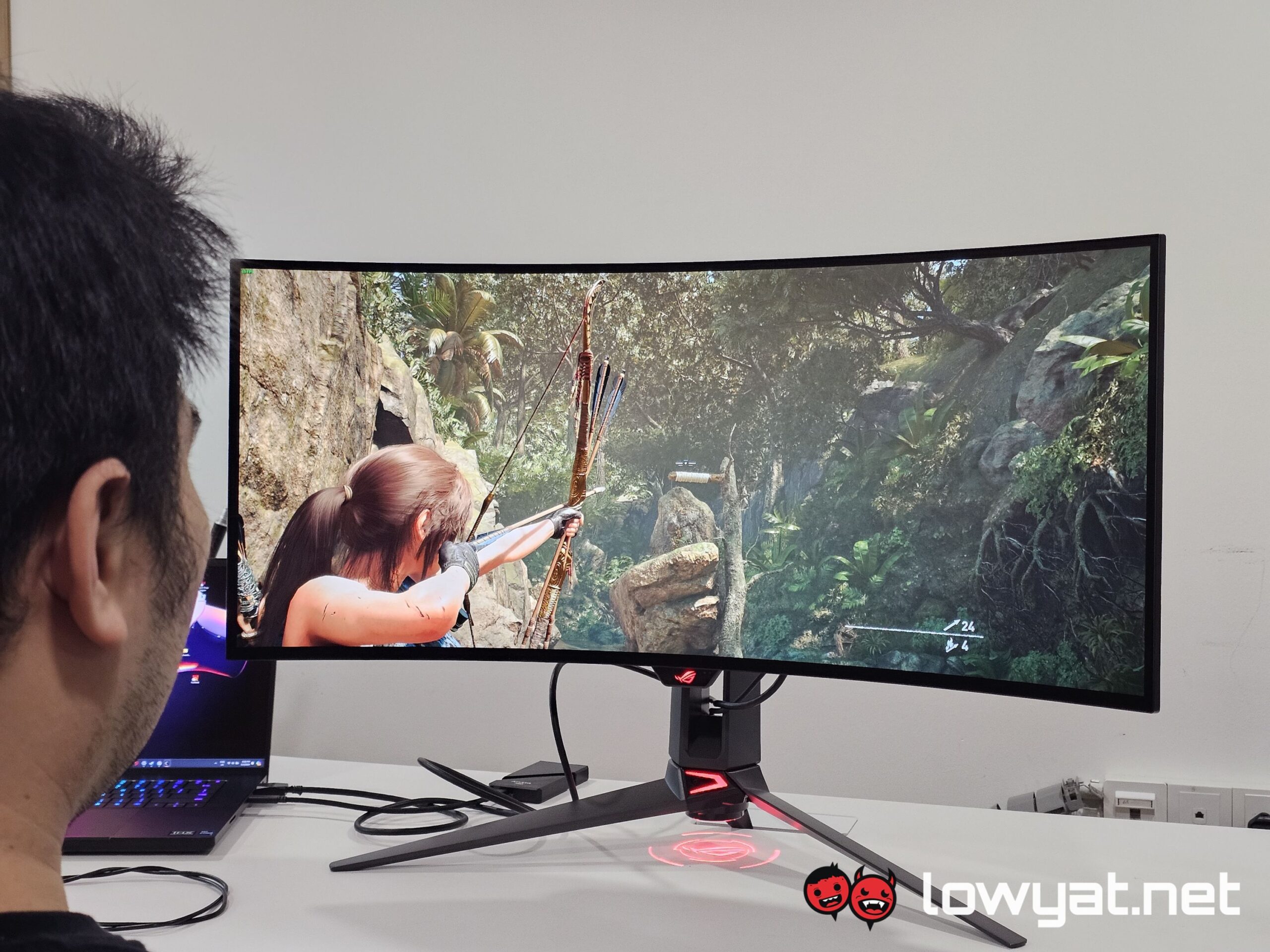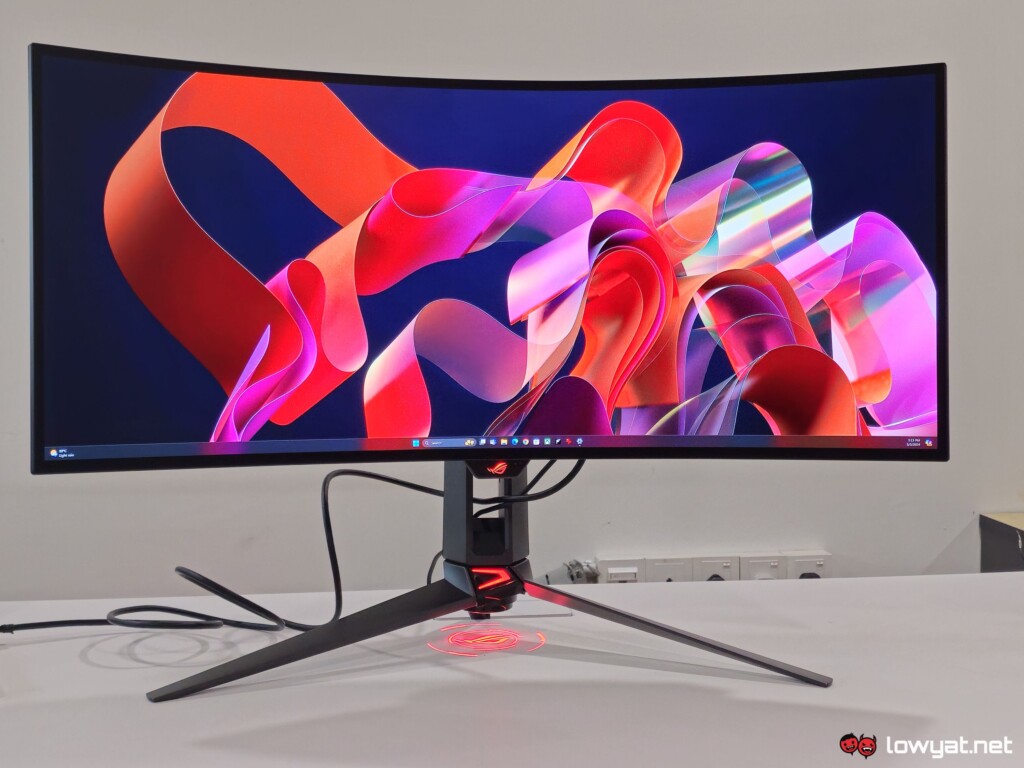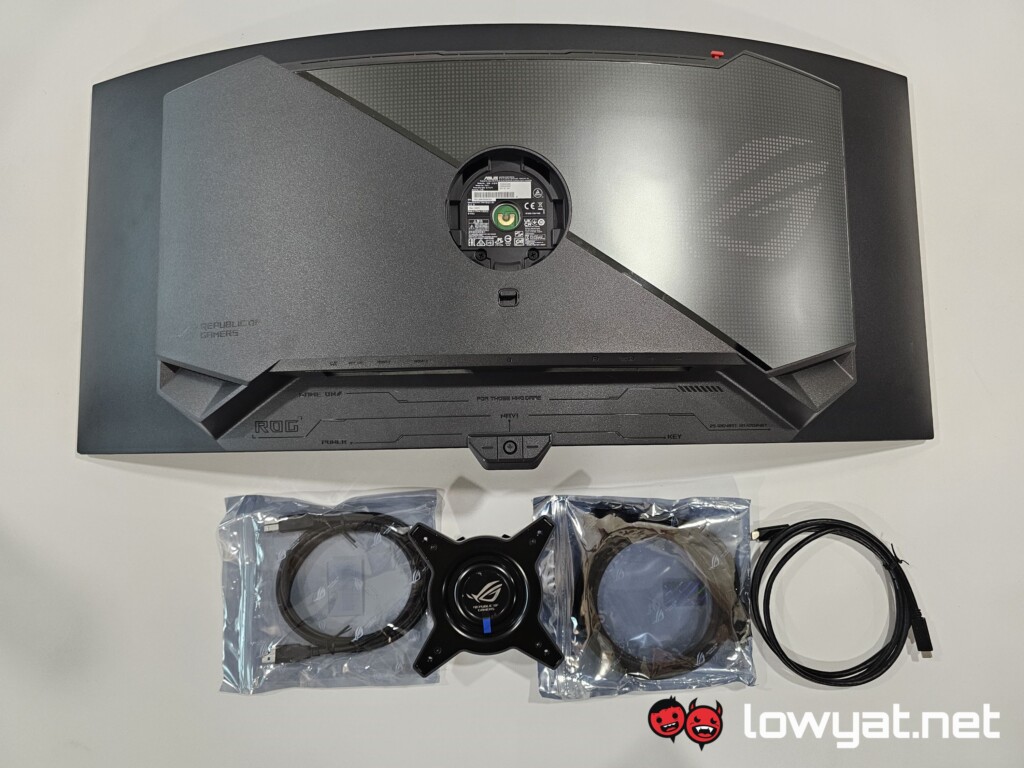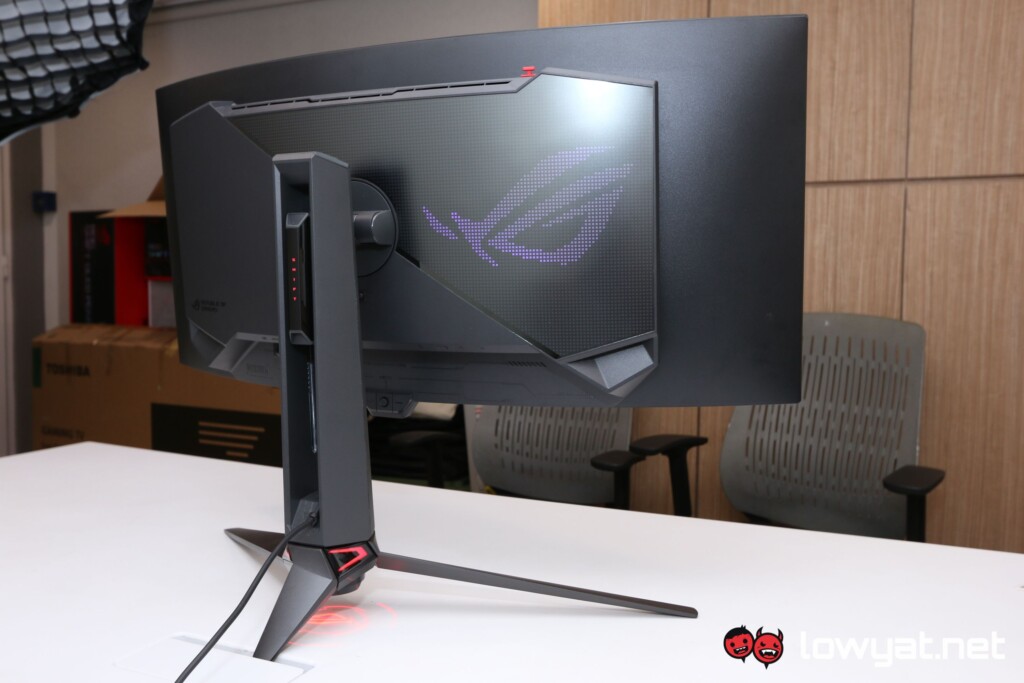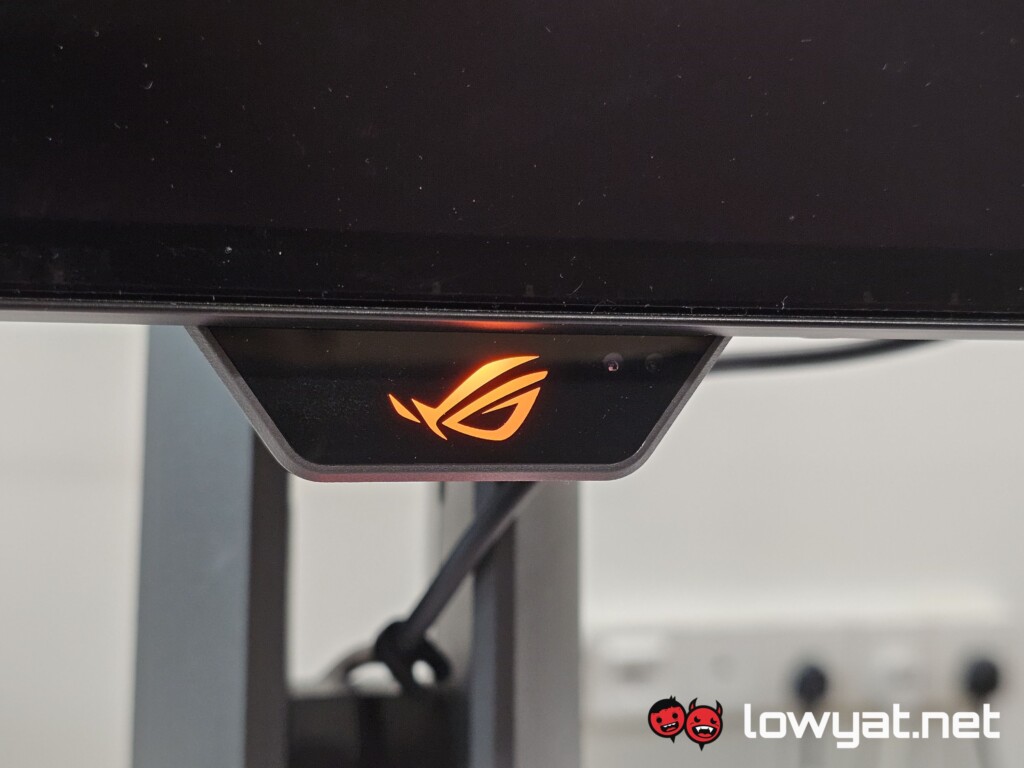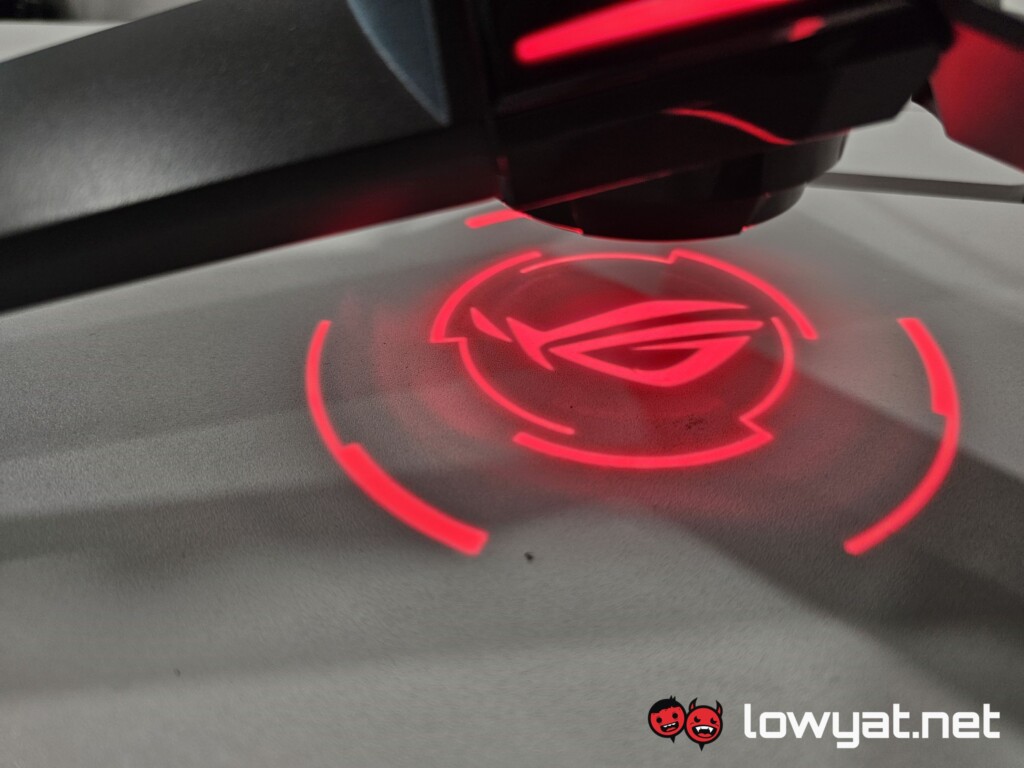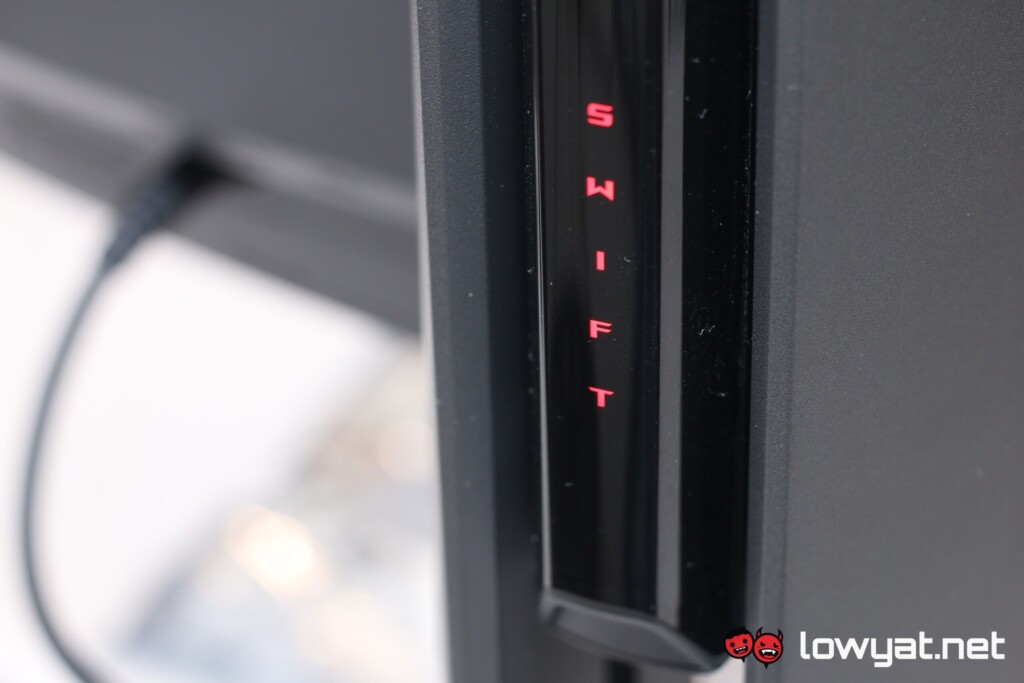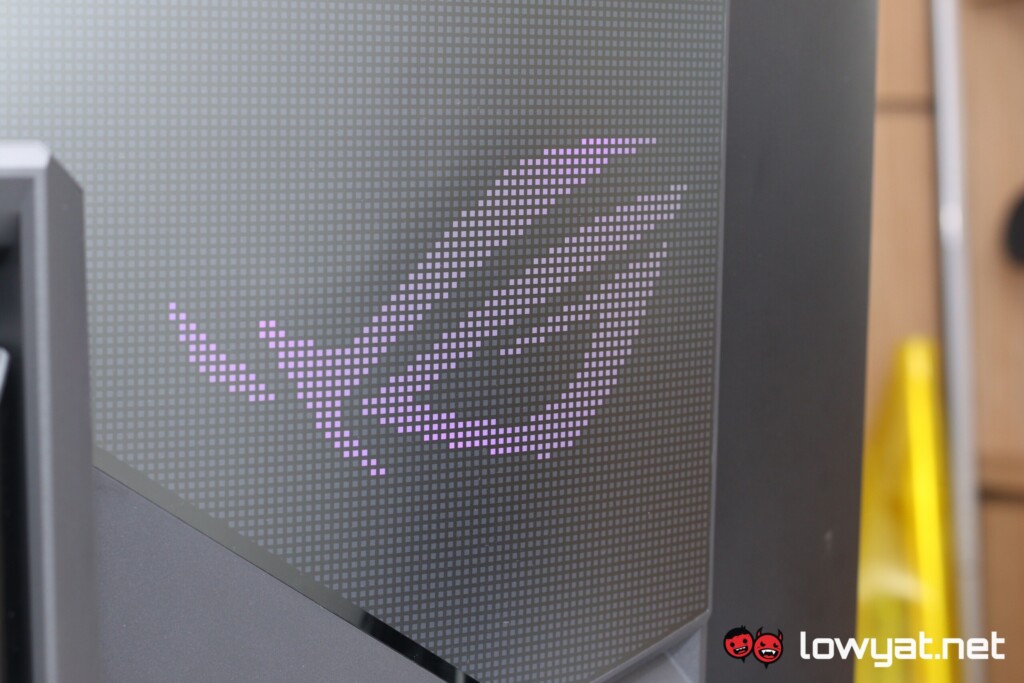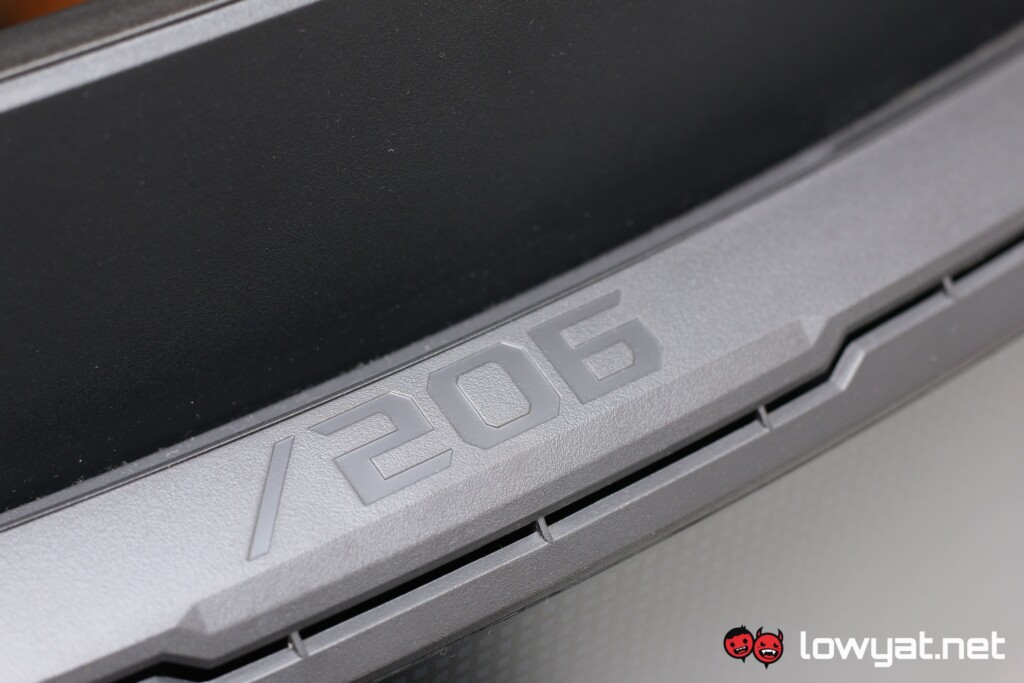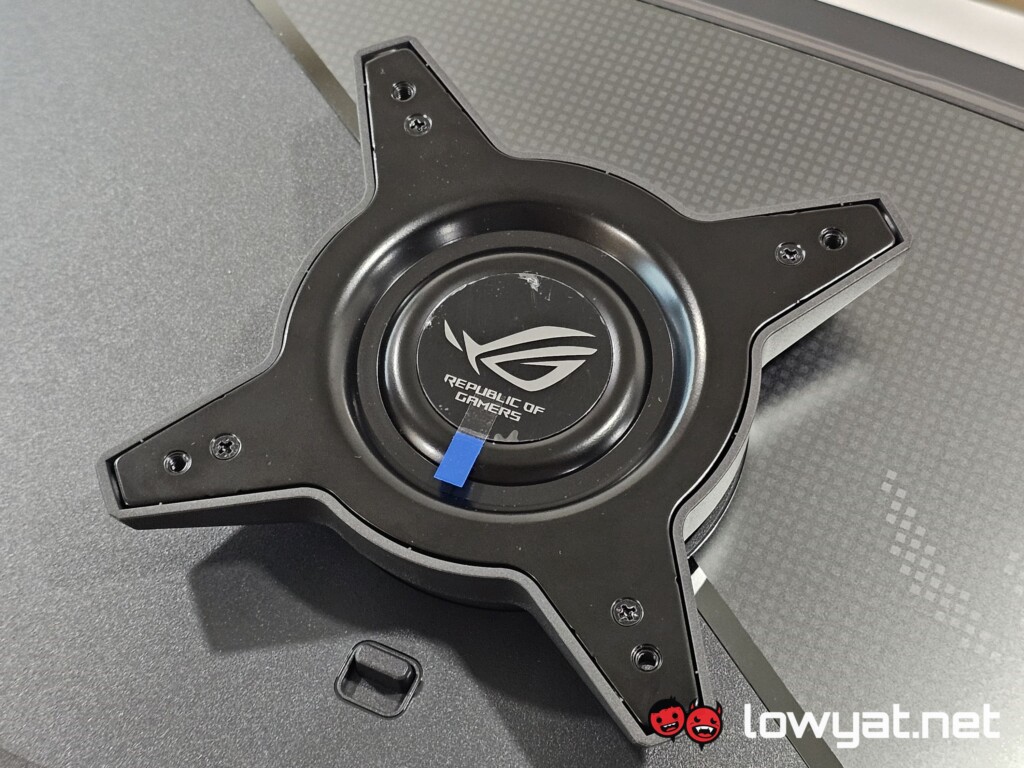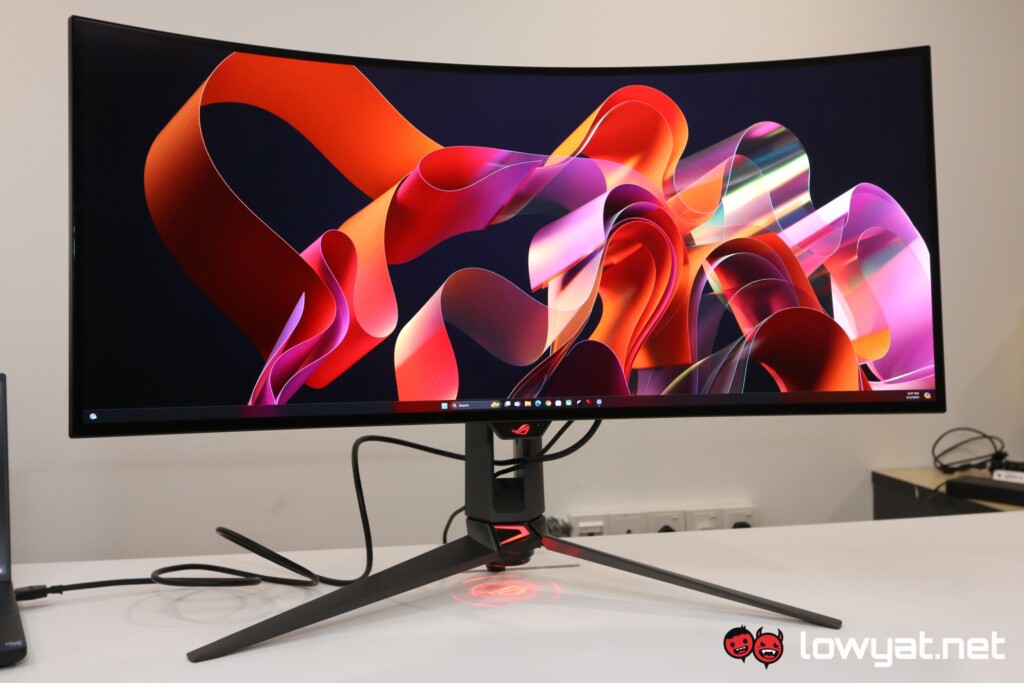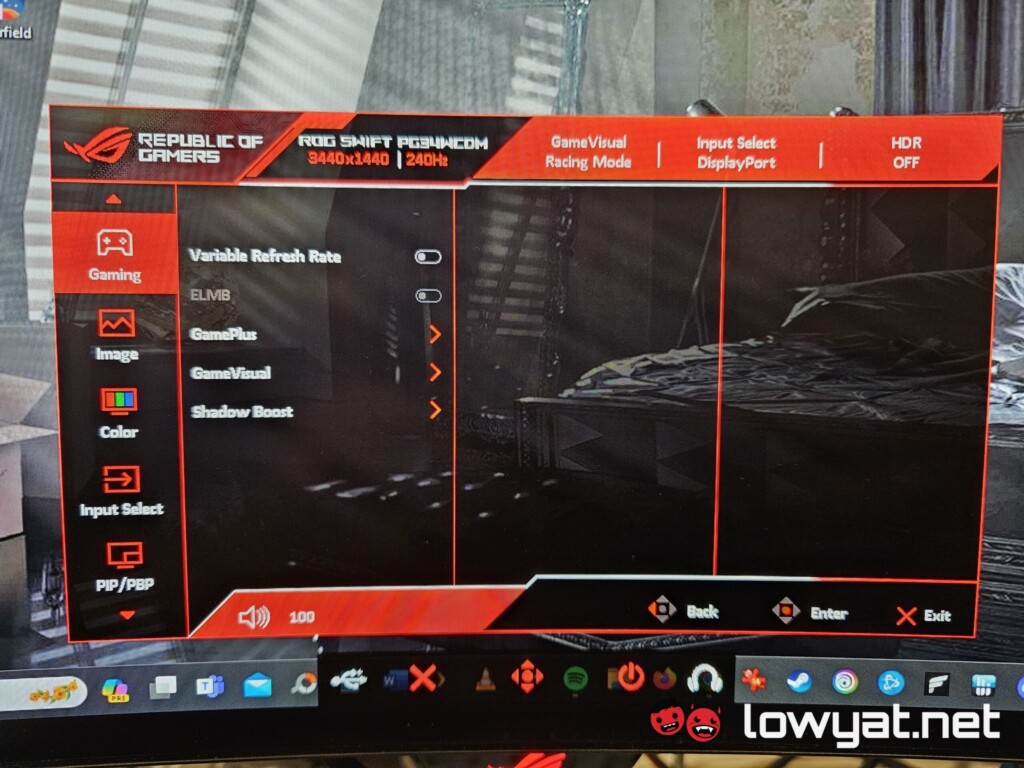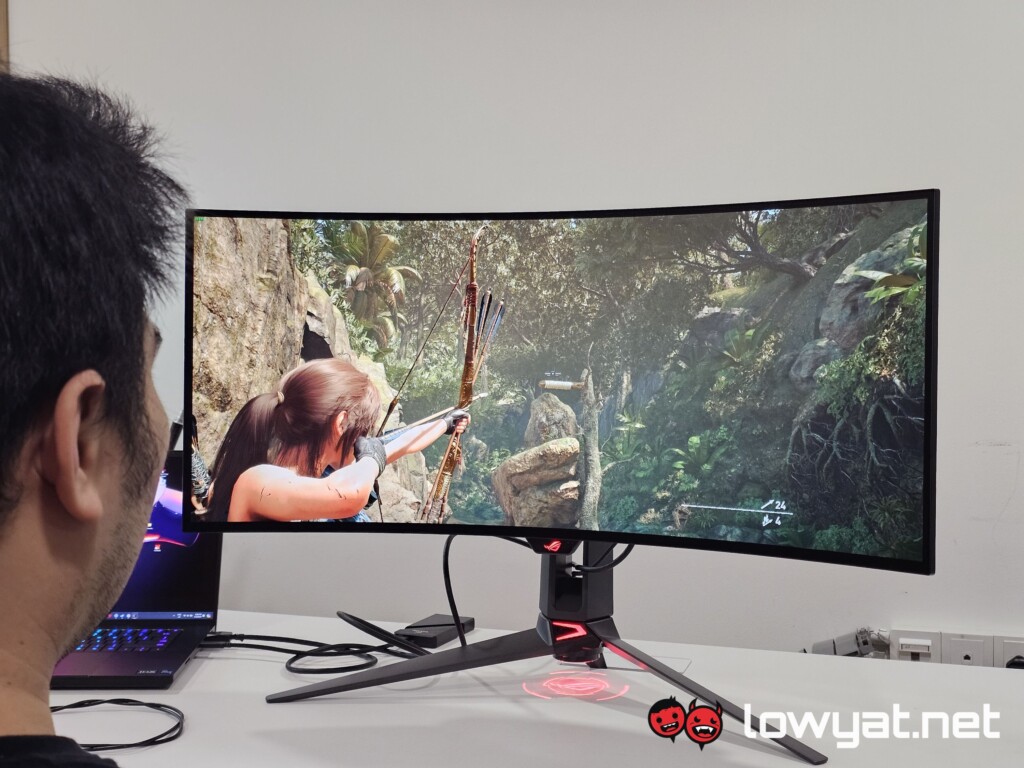2024 appears to be the year that all the major PC brands have chosen to bombard the market with their ultrawide, curved gaming monitors, and that includes brands like ASUS. To that end, and right after I was done with its PG49WCD, I now have the smaller and, dare I say it, more enjoyable ROG Swift PG34WCD on my desk.
What Am I Looking At?
Here are the basics: the PG34WCDM is an ultrawide curved gaming monitor that measures in at 34-inches, has an OLED panel, and an ultrawide resolution of 3,440 x 1,440 pixels to match. Adding to that, it has a variable refresh rate of up to 240Hz, along with a 0.3 GTG response time, is NVIDIA G-Sync Compatible, a custom heatsink built directly into the back of the monitor and covered up by a shroud that is peppered with all aesthetics and vanities that I have come to expect from the ROG branding. Including the large RGB logo on the side.
The stand and spine of the PG34WCDM bears the “Swift” logo as well, and it comes to life in red whenever the monitor is turned on, though I don’t expect anyone who purchases this monitor to consistently get out of their chair, just so they can view it. On a related note, it’s also VESA mount-abled, so you can mount it on a 3rd party monitor arm should you so choose. As part of that package, it even comes with a VESA mount backplate.
The PG34WCDM is also a KVM monitor, supported by the ROG Smart KVM, allowing you to control two devices at the same time, without the need for a second pair of keyboard and mouse. For connectivity, the monitor comes with a DisplayPort 1.4 port, HDMI 2.1, a USB-C that supports 90W PD charging, and a USB-A port.
What’s Good About It?
At 34-inches, you don’t feel the curvature of the PG34WCDM psychologically wrapping around your head as much as the 49-inch monster I reviewed recently, also made by ASUS. That, and unlike the 49-inch behemoth, stays nicely within the length of my desk and doesn’t encroach into my colleague’s working space. The curvature level of 800R is just nice for a monitor of this size
As this is an OLED display, wide as it is, you get the standard expectations of the panel: blacks are deep and inky, whites are practically Matrix-White-Room or afterlife-level bright, and colours just pop out in your face, whether you are watching a movie or playing a game that features a psychotropic-inducing colour palette, like Cyberpunk 2077.
Because the PG34WCDM is HDR-capable as well, the saturation and colour spectrum tend to get blown up or washed out by several notches. Personally, I turn it off because I don’t like my whites and every other colour on the screen looking so washed out. But again, personal choice.
Of course, the 800R curvature feels just right, adding just the right amount of immersion during long gaming sessions.
What’s The Catch?
If there is one slight that I take with the PG34WCDM, it’s that words on the monitor do not look sharp. Compared to a standard OLED monitor, every alphabet on the screen looked blurred and fuzzy. This is especially aggravated whenever HDR is turned on too.
The good news, in my eyes at least, is that this issue isn’t exclusive to the PG34WCDM. It’s an issue with virtually all wide OLED displays, so you’re going to need to take note of this trade-off, if you’re in the market for an ultrawide gaming monitor.
And of course, there’s the price tag: off the shelf, the PG34WCDM retails for RM7,099.
Should I Buy It?
Ultrawide gaming monitors are a tough breed to pitch, to say nothing of the curved variety. With the ASUS ROG Swift PG34WCDM, the blow is softened a little thanks to its OLED panel, but only a little. Again, I like the deep blacks and afterlife whites, along with the fact that this display shows no signs of edge bleeding or blooming anywhere on the panel, but that slight fuzziness to the alphabet is what has me on the fence.
There is also its RM7,099 price tag. That’s pretty steep and practically on par with other ROG Swift monitors, but I think ASUS would sell this monitor better if it were able to drop the price by around RM2,000. Ultrawide OLED or not, this is still just a WQHD display and not 4K. That said, I’d still pick this monitor over the 49-inch behemoth.
Photography by John Law.
Follow us on Instagram, Facebook, Twitter or Telegram for more updates and breaking news.


